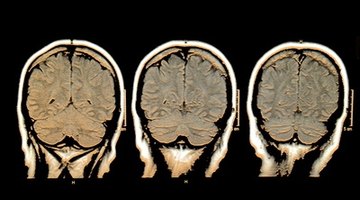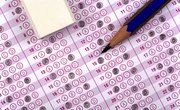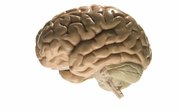Students referred for academic and/or behavioral concerns undergo a psycho-educational evaluation, conducted by the school psychologist. These tests diagnose learning disabilities, mental retardation, emotional disturbance and/or other health impairments. Based on test results and educational progress, it is determined whether students are eligible for special education services. Interpreting diagnostic results can be difficult and many schools offer meetings to help parents understand the findings. However, a general outline for psycho-educational interpretation can be useful.
Interpreting Intelligence
Understand how scores are derived. Results are most often measured using age-based norms. For example, if your child is 7 years old, his test is scored based on what is average for 7-year-old children.

Look at the standard scores for each sub-test and index. Average IQ scores generally are within the 90 to 109 range for most commonly used IQ tests, such as the Wechsler and Stanford Binet tests. Anything above it is a strength; anything below is a weakness. For example, if your child's IQ is 105, it falls within the average range. A score of 82 falls within the low average range of ability.

Look at the percentile rank. This is the portion of same-age peers the student's score surpasses. So if your child has an IQ of 100 and a percentile of 50, his intellectual functioning falls within the average range and exceeds approximately 50% of age-mates.

Examine all results to find strengths and weaknesses. Imagine a student has an IQ of 110, a verbal score of 91 and a nonverbal score of 120. Obviously, the student does better with tasks that include visual or hands-on activities. This knowledge is useful when determining an appropriate approach to learning in the classroom.

Read the intellectual assessment summary. When writing the IQ results, the school psychologist will include interpretations along with the chart of scores. The report should include what each sub-test measures and how they relate to academics.

Interpreting Achievement
Look at scores and percentiles to assess strengths and weaknesses. Achievement ranges are sometimes different than intelligence ranges. For example, the average scores for the Wechsler test is 85 to 115. See which areas are strong or weak, such as math, reading or writing.

Look at age and/or grade equivalents. These are available with most scores and offered as a general marker for functioning. If the age equivalence is 8:9, your child's performance on that sub-test is equal to the abilities of a student age eight years, nine months. If the grade equivalence is 7.2, your child's performance is around grade seven, second month of school.

Compare intelligence with achievement. Most school psychologists include a statement about the student's lowest score needed to create a discrepancy between IQ and achievement. This is how learning disabilities are determined. For example, if a student has a significantly higher IQ than math score on the achievement test, he may have a disability in math.

Interpreting Behavioral and Emotional Ratings
Notice the significant areas of behavioral and emotional ratings. Common rating scales include the "Behavior Assessment System for Children" and the "Scale for Assessing Emotional Disturbance". The school psychologist will indicate which scores are high or low, as well as individual interpretations.

Relate the scores with the diagnostic results. For example, the diagnosis of mental retardation means the student has an IQ of 70 or below and two adaptive deficits. The adaptive skills are scored using rating scales, which are also often used to assess emotional abnormalities.

Contact the school psychologist with questions and for additional interpretation or clarification.
Tip
The "WISC-IV" test is a standardized intellectual assessment used to evaluate overall thinking and reasoning abilities of children ages six to sixteen. The "Stanford Binet" or "SB5" is also an intellectual assessment used on individuals ages two through 85+. The "WIAT-III" is an achievement assessment used to evaluate reading, mathematical, written language, oral expression and listening comprehension skills in individuals grades Pre-K through 12. The "BASC-2" (ages two through twenty one) and "SAED-2" (ages two through eighteen) are behavioral and emotional scales.
Warning
Use caution when interpreting individual results. Consult with the school psychologist for additional interpretations, as well as for student variations. This article is offered only as a general outline.

Related Articles
References
Tips
- The "WISC-IV" test is a standardized intellectual assessment used to evaluate overall thinking and reasoning abilities of children ages six to sixteen. The "Stanford Binet" or "SB5" is also an intellectual assessment used on individuals ages two through 85+. The "WIAT-III" is an achievement assessment used to evaluate reading, mathematical, written language, oral expression and listening comprehension skills in individuals grades Pre-K through 12. The "BASC-2" (ages two through twenty one) and "SAED-2" (ages two through eighteen) are behavioral and emotional scales.
Warnings
- Use caution when interpreting individual results. Consult with the school psychologist for additional interpretations, as well as for student variations. This article is offered only as a general outline.
Writer Bio
Kelly Crawford began writing in 2007. She contributes to numerous psycho-educational evaluation reports. She received her Bachelors of Arts in psychology as well as her Master of Science and Education Specialist Certification in school psychology from the California University of Pennsylvania. Crawford is a Nationally Certified School Psychologist working within the intermediate unit.











